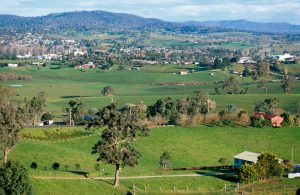The Federal Government’s proposed superannuation tax changes are prompting concern among farming families with significant assets held in self-managed super funds (SMSFs). The new tax on unrealised capital gains, known as Div 296, will apply to individuals with super balances over $3 million, if it is passed by the Federal Parliament in its current form.
Currently, earnings within super—including capital growth—are taxed at a concessional 15%. Under the new measure, any earnings linked to the portion of a balance above $3 million will face an additional 15% tax, effectively taking the rate to 30%.
The calculation in its simplest form works as follows:
- Determine what portion of the super balance exceeds $3 million (e.g. a $10 million balance is 70% over the cap).
- Multiply that percentage by the fund’s net gain for the year.
- Apply a 15% tax to the result.
The proposal also carries no indexation to the threshold, thereby making it designed to capture more taxpayers as their assets approach $3 million.
In a recent report on ABC Radio, the Norman family near Junee, NSW, could be significantly affected. “Mum and Dad are about $5.5 million between them… 70 per cent of that is held in agricultural assets,” said Murray Norman. With little liquidity, they estimate an additional annual tax bill of $120,000. “It does put a whole lot of stress on the farm at the moment that we’re not prepared for,” he said.
An economist at Australian National University, Robert Bruenig, told the ABC that farmers’ strategies of holding rural assets in super could be vulnerable.
“One of the consequences of this change is that it’s going to be pretty unattractive to hold large assets within super where the main income that you’re getting is growth in the value of the capital asset. So, think of farm or an investment property,” he said.
What Can You Do?
Cato Advisory is already fielding enquiries from SMSF members—particularly in agriculture—about strategies to reduce exposure to the new tax. One emerging solution is using debt financing to withdraw assets from superannuation and restructure them outside the fund, allowing greater flexibility and avoiding the unrealised gains tax.
This approach is complex, and decisions around asset transfers, tax timing, and gearing require careful planning.
While the new policy is aimed at limiting generous concessions for very large balances, farming families with asset-rich, cash-poor SMSFs are likely to feel the impact first.
Disclaimer: This article is general in nature and does not constitute financial advice. Individuals affected by these changes should consult a licensed SMSF specialist or qualified tax accountant.








